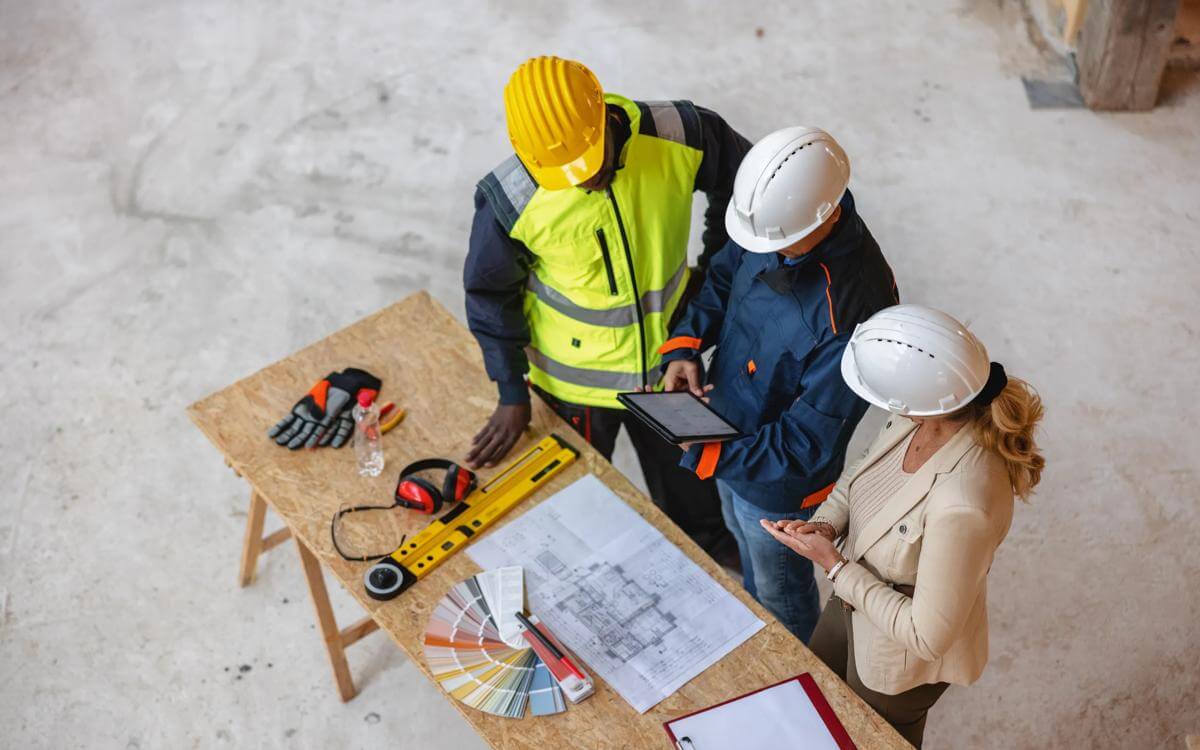Build back better and gender mainstreaming in public procurement
In the course of dealing with Covid-19 many leaders have talked about ‘build back better’ and inclusivity should be at the heart of it.
This article is taken from September's public matters newsletter. Click here to view more articles from this issue.
In the course of dealing with the Covid-19 pandemic, many leaders in the public and private sector have talked about ‘build back better’. For example, the Prime Minister in a speech during this summer said “this government will build back better, build back greener, build back faster’”. At a local level, many local authorities have started to consider how they can build back better – in Manchester, the Greater Manchester Local Enterprise Partnership together with the Growth Company have organised a number of webinars on this topic and have asked businesses to respond with their ideas.
As part of any build back better agenda – whether at national or local level, procurement for works, goods or services will be key (whatever form the applicable regulations take in the post-Brexit world). And as part of this new build back better agenda, what about it being inclusive and integrating gender mainstreaming?
What is gender mainstreaming?
Gender mainstreaming is “the process of assessing the implications for women and men of any planned action, including legislation, policies or programmes, in any area and at all levels. It is a strategy for making the concerns and experiences of women as well as men an integral part of the design, implementation, monitoring and evaluation of policies and programmes in all political, economic and societal spheres, so that women and men [and we would add non-binary as well] benefit equally, and inequality is not perpetuated” (Defined by the United National Economic and Social Council (ECOSOC) in July 1997). The ultimate goal of gender mainstreaming being to achieve gender equality.
Gender mainstreaming may require specific activities and interventions on a temporary basis to address disadvantages experienced by any gender.
However, it is important to recognise that it is not about adding a ‘women’s component’ or ‘gender equality component’. It requires much further thought so that experiences, knowledge and interests of all genders can be holistically integrated into an activity, policy, programme or contract for goods, services or works.
The process of gender mainstreaming is best understood as a cycle with different stages (designed by the European Institute for Gender Equality)
- Define tools
- Gender statistics
- Gender analysis
- Gender impact assessment
- Gender stakeholder consultation
- Plan tools
- Gender budgeting
- Gender procurement
- Gender indicators
- Act tools
- Gender equality training
- Gender-sensitive institutional transformation
- Gender awareness -raising
- Check tools
- Gender monitoring
- Gender evaluation
How is gender mainstreaming currently incorporated in public procurement?
Public authorities are likely to have incorporated some form of gender mainstreaming in their public procurement for a number of years. This may have been as a policy decision, as well as part of complying with their public sector equality duty (if applicable) and their obligation under Public Services (Social Value) Act 2012 (Social Value Act).
The public sector equality duty (section 149 (1) of the Equality Act 2010), provides that a public authority must, in the exercise of its functions, have due regard to the need to:
- eliminate discrimination and any other conduct prohibited by the Equality Act;
- advance equality of opportunity and foster good relations between persons who share a relevant protected characteristic and persons who do not.
Under the Social Value Act (section 1(3), contracting authorities are required to consider how what is being proposed to be procured might improve the economic, social and environmental-wellbeing of the relevant area and how it might act in order to secure their improvement.
Well-being is to be considered before starting the procurement process so this should be when the contracting authority is planning how it will procure particular services. It should be an integral part of designing the specification, the evaluation criteria and the contractual arrangements.
In addition, under section 1 (7) of the Social Value Act, there is a duty to consider whether to undertake a consultation on the issue of social value.
However, it is also important to note that:
- the public sector equality duty targets a number of protected characterises and not just gender equality;
- the relevant sections of the Social Value Act impose a duty to consider rather than a duty to take action.
Therefore, a public authority may instead prioritise a different protected characteristic (and there may be good reason for doing so) or it may discharge its duty by only considering rather than taking any action. For both duties, particularly under the public sector equality duty, the contracting authority must have a good audit trail of the decisions it has made to show that a reasonable and legitimate decision has been taken.
Public authorities are likely to evidence discharging these duties by:
- carrying out an equality impact assessment as part of any procurement process;
- utilising any information regarding users’ protected characteristics where this is relevant to the services being procured from the incumbent contractor or utilising monitoring and evaluation data from the incumbent contractor;
- assessing compliance with equality legislation and having relevant policies at the selection stage;
- specifying specific requirements in the specification (where equality is a core requirement);
- requesting social value proposals from tenderers (either for those to be aligned to the public authority’s social value strategy or allowing the tenderer to make their own proposals).
What difference could holistic incorporation of gender mainstreaming make in public procurement?
In 2011, the Municipality of Karlskoga in Sweden1 started a gender equality initiative which required officials to re-evaluate all of the Municipality’s policies through a gendered lens. Officials in charge of dealing with snow clearing were of the view that their work did not require re-evaluating because snow clearing could not be sexist. Their colleagues in charge of the gender equality initiative disagreed.
Looking at the snow clearing operation with a gender lens, the officials in charge found that snow clearing began with the major roads and ended with pavements and bicycle lanes. However, this was affecting men and women differently because men and women travelled differently: men were more likely to drive and have a fairly simple travel pattern – a twice daily commute to their place of work. Whereas women’s travel patterns were more complicated because women do 75% of the world’s unpaid care work and this affects their travel needs. A typical travel pattern for a woman might involve dropping off the children to school before work, taking an elderly relative to the doctors and going to the supermarket on the way home.
In Karlskoga what they thought to be a gender-neutral snow clearing operation was in fact not gender neutral at all. In response, the councillors changed the snow clearing operation starting with pavements and bicycle lanes and then moving onto main roads. Their rationale was that it would be easier to drive a car through three inches of snow than pushing a pram, wheelchair or riding a bike.
Whilst they did not consider accident data or hospital data, this simple change in the order of snow clearing would actually save them money in the longer term. This is because hospital admission data for Northern Sweden showed that pedestrians were 3 times more likely to be injured in slippery or icy conditions than motorists and accounted for half of hospital time of all traffic related traffic injuries. Also, the majority of the pedestrians were women.
How could gender mainstreaming be holistically incorporated in public procurement?
The Equality and Human Rights Commission published the following guidance in 2013 ‘Buying better outcomes: mainstreaming equality considerations in procurement – a guide for public authorities in England’ (guidance). It remains a good resource for public authorities to use as it makes recommendations for integrating equality outcomes throughout the procurement cycle, as well as providing useful examples where local authorities have successfully integrated equality outcomes.
Some of the recommendations the guidance makes are:
- Reviewing your procurement strategy so that it supports the equality duty – for example by increasing supplier diversity, requiring experience of working with marginalised groups.
- Identifying need and building a business case – the aim here being to establish how relevant equality is to a procurement and whether it needs to be a core requirement which may require assessing existing provision.
- Setting out equality requirements in contract specifications – where equality is central to the service it is regarded as a core requirement, which you may include in the contract specification. Where equality is not the main consideration, it may still be a relevant consideration, which should be included. In either case, the business case could be an important tool to use in specifying your requirements.
- Adding value to the procurement by requesting social value proposals that integrate equality.
- Specifying positive action and reasonable adjustments in order to improve equality – this may be necessary to address evidence-based inequalities or be required because of certain protected characteristics of service users.
- Specifying a monitoring framework in the specification which may include equality monitoring.
- Specifying equality requirements in the contract notice so that this is clear from the outset including stating where the organisation awarded the contract will be subject to the public sector equality duty.
- Where a selection questionnaire is used – it may be appropriate to assess the supplier’s status in respect of equality requirements.
- The invitation to tender could specify equality requirements based on your business case, which may relate to compliance with equality legislation, desired outcomes of the contract, technical or workforce requirements and/or desired wider community benefits.
- Where equality requirements are included, the evaluation of equality criteria will also need to be provided for and be clear.
- Equality requirements within the monitoring and evaluation framework so that this information can be utilised during performance management, as well as at expiry or termination to inform future service provision.
In addition, we would advise looking at who is involved in the procurement process: do you have a diverse project team? who is evaluating? can you bring in additional people if the core team is not diverse? The research has been clear for more than 10 years now that diverse teams are more likely to make decisions that have a positive impact on the business both short and long term.
Any equality requirements or requirements specific to gender that you choose to include in a procurement should be objective and clearly stated in terms of your expectations, how bidders can demonstrate them and how you will evaluate them. In addition, it is important to set requirements that are proportionate, transparent, non-discriminatory and enable you to treat all tenderers equally.
As part of the build back better agenda, the first step that public authorities might consider is where do their processes and practices stand for each part of the gender mainstreaming cycle noted above. This would require considering some or all of the following:
- Does the authority have the relevant gender data sets/statistics to ensure that gender mainstreaming is part of the build back better agenda, as well as any project/policy it adopts through that agenda? This could relate to a range of statistics for example whether there are differences between genders and how they use public transport or access a particular service. If not, how could those statistics be obtained so that gender mainstreaming is integrated in transport infrastructure, in commissioning transport vehicles or transport services or procuring a particular service?
- Do professionals working on the build back better agenda have awareness of and have the skills to implement gender mainstreaming? If not, could training and awareness raising be relevant in general or in relation to gender budgeting or gender indicators?
- Is the procurement policy robust and does it include gender mainstreaming? If not, how could that be addressed.
- Within any procurement process how is gender mainstreaming being addressed? whilst this will depend on the specifics, if different genders do not equally participate in the workforce or in public life in your area, there could be opportunities to address these shortcomings through social value if no other specific opportunities are presented within a particular procurement.
- Finally, are you monitoring and evaluating gender mainstreaming as part of the build back better agenda but also more widely in your area? If you started with not having the relevant gender data sets, putting in place appropriate monitoring and evaluation frameworks for gender mainstreaming will mean future agendas, policies and procurements that will allow you to integrate gender mainstreaming much more easily as you will have data that tells you the experience of men and women.
With any build back better initiative that public authorities engage in, inclusivity should be at the heart of it as gender mainstreaming in such an initiative, as well as public procurement, would enable building back better for everyone.
If you have any questions about gender mainstreaming in public procurement or if we can assist in this regard, please do not hesitate to contact us.
1 This example is from “Invisible Women – Exposing Data Bias in a World Designed for Men” by Caroline Criado Perez.
Contact

Mark Hickson
Head of Business Development
onlineteaminbox@brownejacobson.com
+44 (0)370 270 6000








































